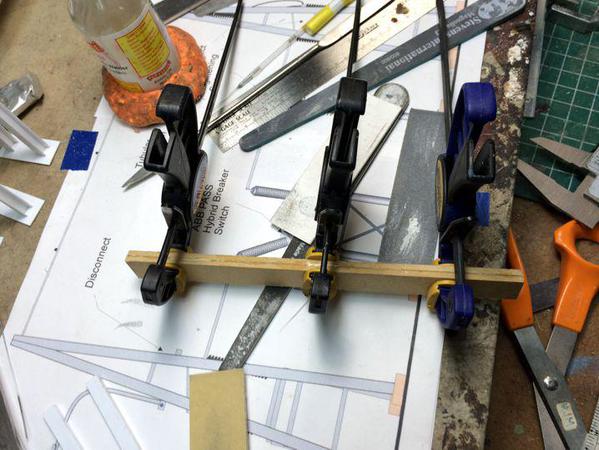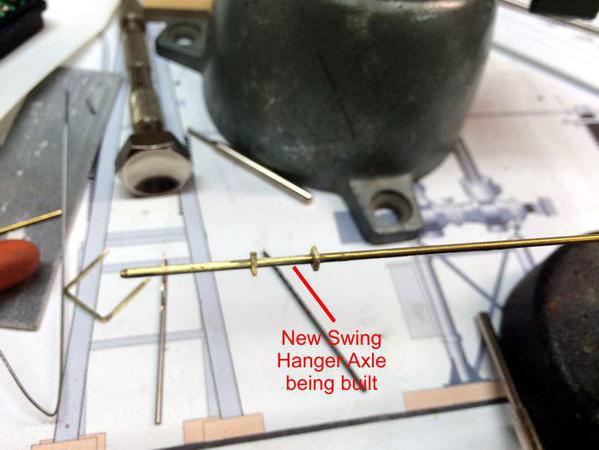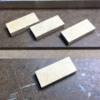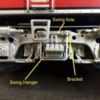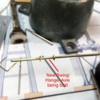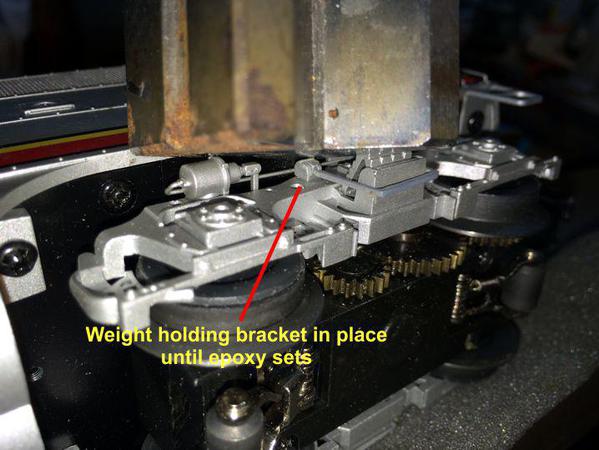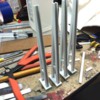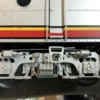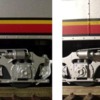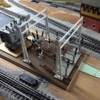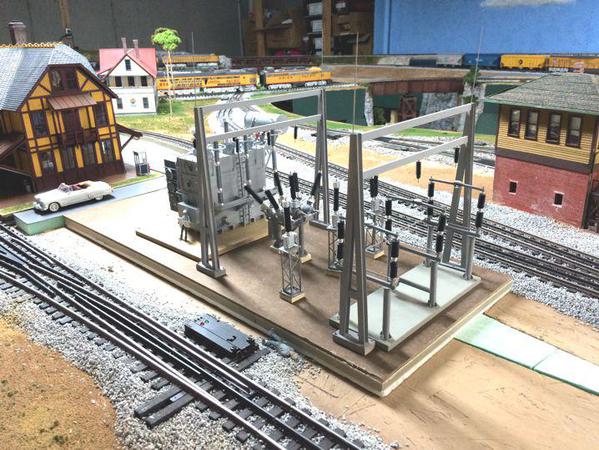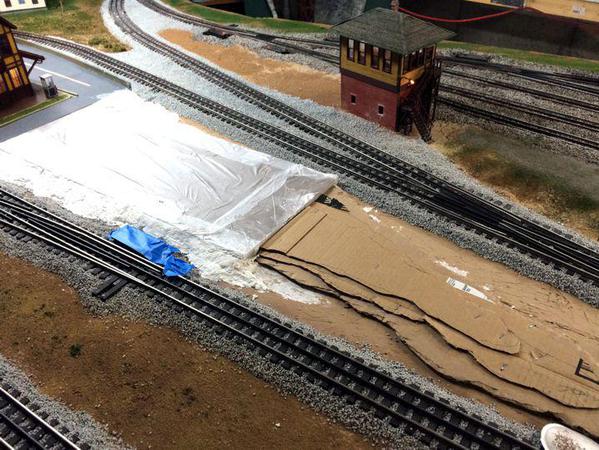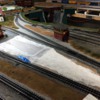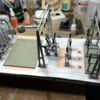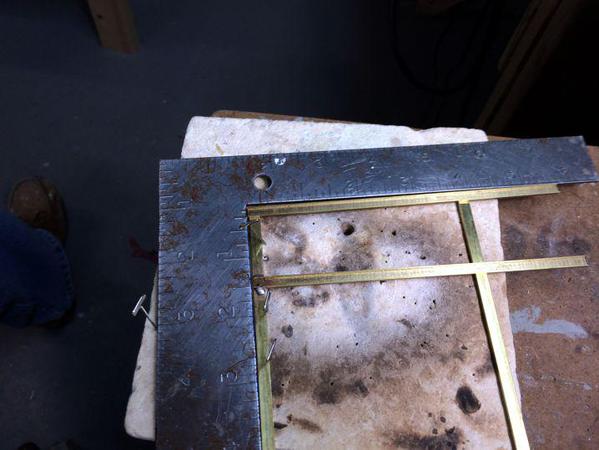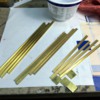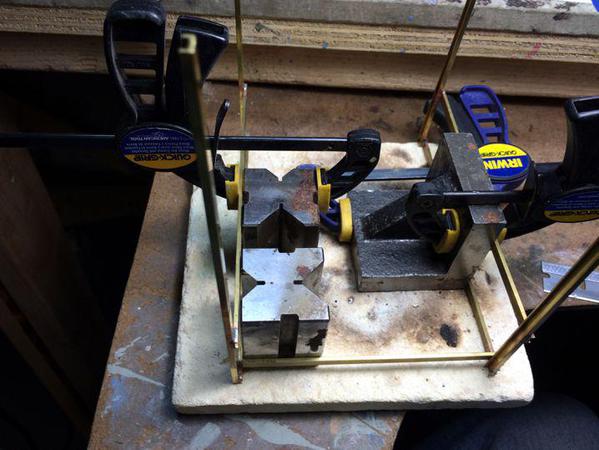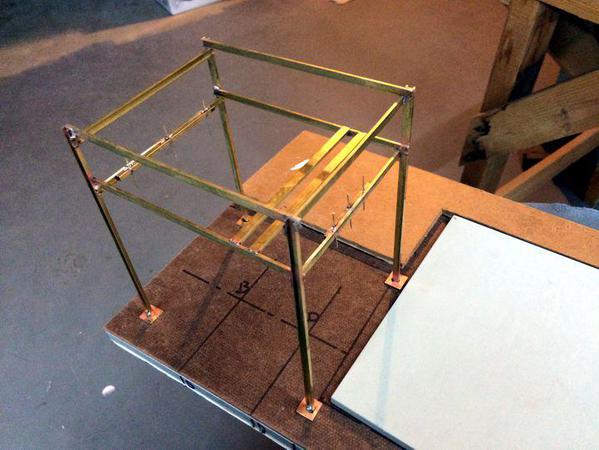#2 grandson, commented last Saturday, when we were watching "Guardians of the Galaxy" on my big entertainment system the we don't have to go to the movies any more. In fact he said "that I don't go to movies any more!", completely forgetting that he, his mom, my wife and I went to the movies 2 weeks ago when we saw "Big Hero 6". His dad and #1 were in Chicago going to a Northwestern-Michigan game. The also got to the Museum of Science and Industry and he brought me back pictures of their vast HO layout.
Lot of topics to cover in today's report...
Finished the repair on the Santa Fe and it pretty much meets my expectations, but I'll leave that up to you guys. The new swing hanger is a little bit thicker than the original, but you have to pay attention to it to see it.

I made the 6 hanging insulators for the gantries, and then finished gantry assembly. I added NBW castings to the base plates, and applied Aero Gloss sanding sealer on all apparatus bases in preparation for concrete painting. Meanwhile, #1 grandson was working with me. First he was going to get into decaling the F-22 only to find that each and every decal was cracking and disintegrating. I tried to use the "Put fixative on the decals" method to prevent them from cracking, only to have them change color and become basically useless. These are the low-viz markings that are used on USAF stealth 6th Generation fighters. I now have to find new decals for the model. So... making lemonade, he went back to work putting down more ground cover on the layout. He then pulled another model off the shelf—a 1:350 Trumpeter Model of the USS Hornet including little models of B-25s that Doolittle used in the Tokyo Raid. He'll have fun with that one.
Here's the insulators. I turned little transition pieces to dress them up a bit.

I then installed the cross members that connect the two gantry towers. These are butt-jointed to the towers and I added some little gussets to reinforce the joints. The cross members are 7.5" wide and clear the Disonnector by about 1/8" on each side.
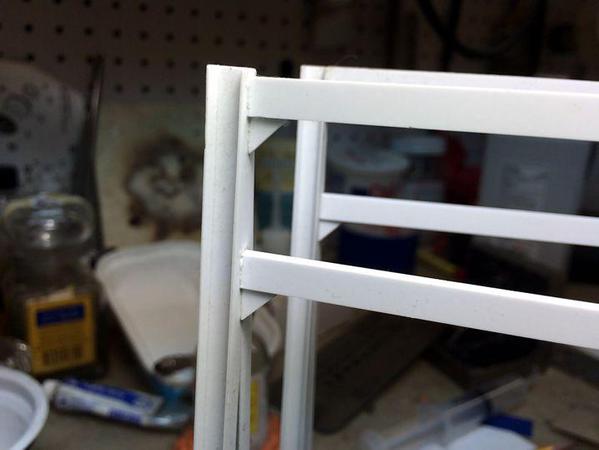
Sanded the base plates to coincide with the "concrete" pads exactly. Then used the sanding sealer to seal the wood to improve finish for the acrylic "concrete" top coat.
Measured and drilled the holes for the insulators in the bottom cross members. For the gantry over the disconnector used their spacing for the holes, but for the one that will sit over the breaker, used the spacing of the surge suppressors on the main transformer. Finally, I added True Details NBW castings. These are available in the hobby shop as are used for auto model detailing, but they're a nice size for larger 1:48 simulated fasteners. They're resin castings and can't be glued with solvent cement. You need to use CA.

I ran out of time so didn't get a coat of paint on them, but I did set them down on the substation base to see how it looks. With these built, the HV section's apparatus is now complete. After painting, I'll add back the insulators.

This landscaping is either temporary, not quite finished or both, but we're are making progress covering the bare layout. The first is a retaining wall next to the station's access road. #2 grandson and I built it several weeks ago. #1 grandson painted it last weekend and I installed it with Titebond glue. Today I added back the ballast. It needs weeds, debris and other detritus that accumulates at the base of such a wall on an active railway. You can just see the substation base on the left.

Here's some grass down #1 applied to the long back run. I said temporary because I don't know the ultimate use for that territory, but it needed some dressing up.

And finally, we're starting to do ground cover in the area around the switch tower. The idea is that there will be an unimproved road from the engine service area, across the five yard tracks and then leading to the switch tower with a small parking area. It needs more material, but that will wait until next time.
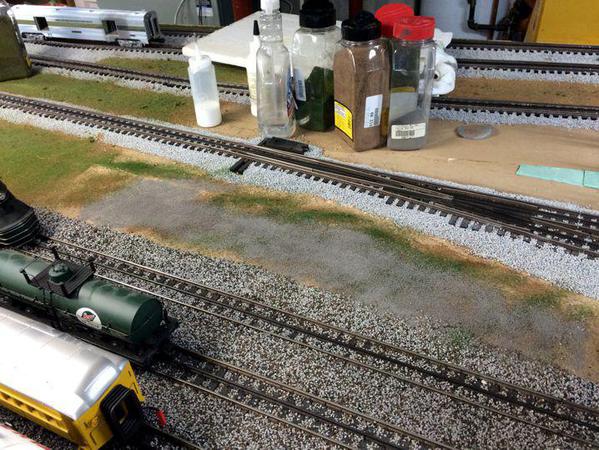
Whew! That covers today's work. I'm getting itchy to build the land forms around the substation base. This has to be done soon since I'm going to have to start fastening the apparatus to the base and finish the ground cover on that (fine gravel), and I don't want to be manhandling that very complex structure when attempting to do plastering and ground cover. I'm just not relishing getting back into the plaster business.





